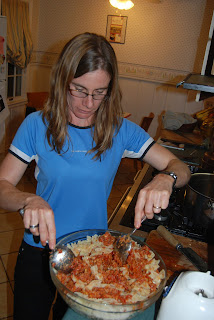Having previously only associated the term "Quick Draw" with gunsligners of the old west, I was anxious to get into the Quick Draw system for waterfowl hunting on Eagle Bluffs. I soon found that, like many unfamiliar things, the draw system sounds complicated when you read about it, but when you put yourself into the process, it's really pretty straightforward.
And I won! I'm putting in for Eagle Bluffs Consevervation Area, only about 20 minutes from my home. I applied to hunt the first three days of season (Saturday through Monday), and was randomly selected as number 14 for Monday. After those days were drawn, I applied for Tuesday through Thursday, and was selected as number 9 for both Tuesday and Thursday. I was told you only have about a 2 percent chance of being drawn on the Quick Draw, so for me to be drawn three times in the first week is beyond lucky.
On Saturday, opening morning, I reported to Eagle Bluffs for the 5:15 a.m. draw. My mentor, Bill Ward, introduced me to the two other people in our hunting party. This was a dream team of mentors, with over 150 years of duck hunting experience between the four of us (counting my zero years).
Since none of us had a quick draw number to hunt in the limited number of spots on Saturday morning, we each had a chance to draw for the "poor line" and still get a chance to hunt. Since my luck had been running hot, I drawed all four numbers for the group. But here my luck ran out. I probably had close to a 50-50 shot (I'm guessing) of pulling a low enough number to get in, but I didn't do it. One of my partners just shrugged and said, "Well, I guess I'll go deer hunting." They all were in to come back the next day and try for the poor line again, but since I had three hunts guaranteed the next week, I decided to stay home Sunday to catch up on on jobs around the house, and sleep, and wait until Monday to go out. Bill assured me that he would be there everyday, ready to go.
The duck report on Monday morning was about 7,000 birds, only a fraction of last year's 21,000, but much better than the 1,800 that had been there only a few days before. Apparently how many ducks are present is mostly dependent on the weather, and since they are migrating, the weather in other places is just as relatvant as the weather here.
I'm excited about what this next week holds. More than the prospect of bringing home some ducks for the cookbook quest, I'm excited about learning what waterfowl hunting is all about.












































